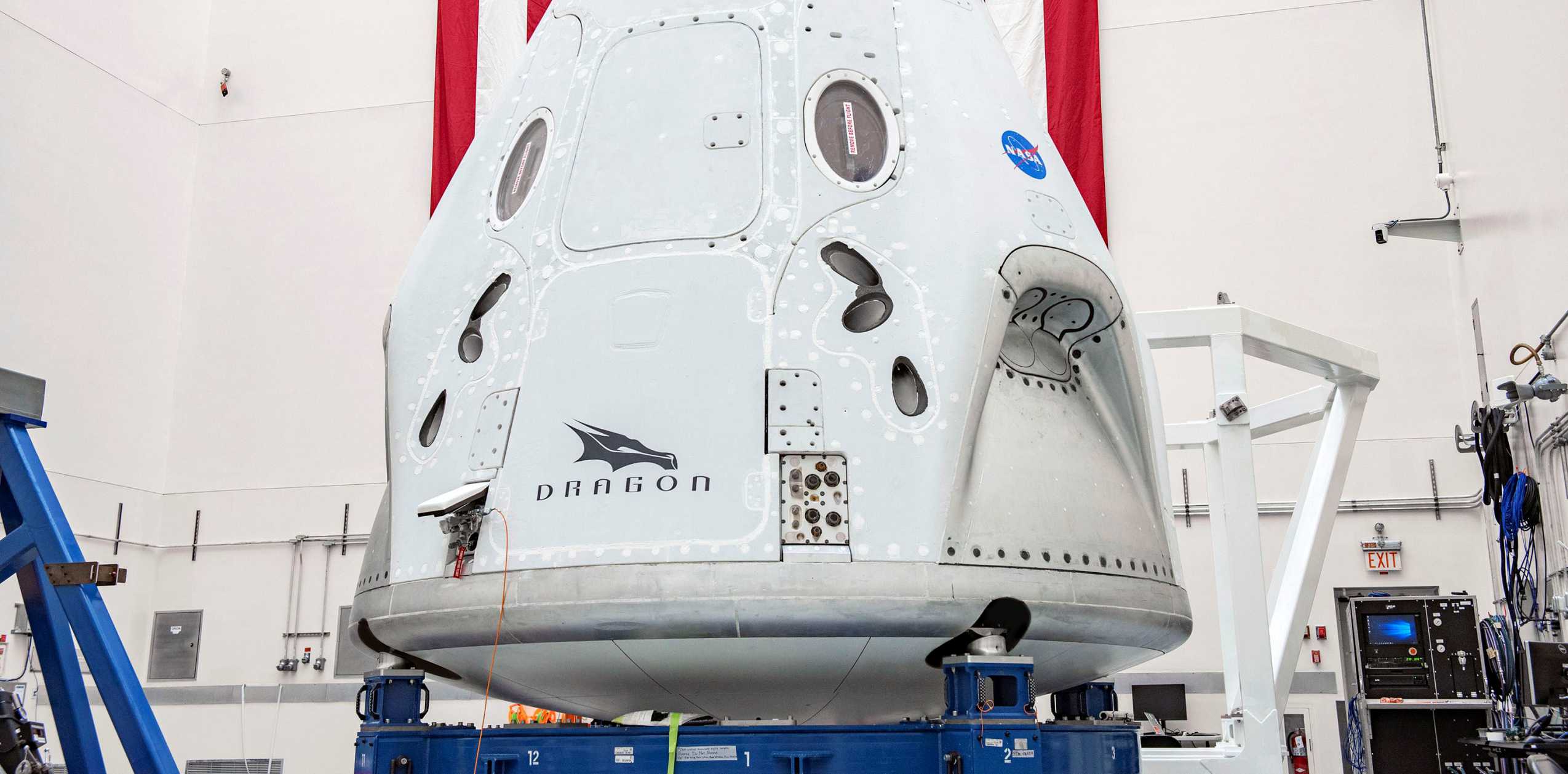

News
SpaceX Crew Dragon NASA astronaut launch debut will carry a surprise payload
SpaceX has plans to include a surprise payload aboard Crew Dragon’s inaugural NASA astronaut launch, scheduled to lift off as soon as May 27th.
Per a NASA update published on May 13th, SpaceX and the space agency remain on track for what will arguably be the company’s single most important mission since its founding in 2002. Over the last 6-9 years, depending on how one counts, SpaceX and NASA have worked relentlessly to develop the next-generation Crew Dragon spacecraft, a dramatically different variant of the extensively flown Cargo Dragon (Dragon 1).
Although the spacecraft’s next launch will be both its and SpaceX’s first crewed launch ever, Crew Dragon has already completed two successful abort tests in 2015 and 2020, as well as a flawless orbital launch debut in March 2019. Just shy of 16 months and no shortage of technical hurdles since that uncrewed orbital debut, the third Crew Dragon spacecraft completed by SpaceX (capsule C206) and a brand new Falcon 9 rocket are ready to make history. Now, on top of the many historic milestones attached to Crew Dragon’s Demo-2 mission, NASA astronauts Bob Behnken and Doug Hurley will be joined by a mosaic of Earth created by tens or even hundreds of thousands of students – both young and old – from around the world.

As of May 15th, per NASA’s latest blog post updates, SpaceX’s plethora of Crew Dragon Demo-2 hardware appears to be just shy of 100% ready for flight, at least from a technical perspective. As of May 12th, NASA and SpaceX officially cleared Crew Dragon’s interior and both astronauts’ space suits for flight, effectively closing out the crew capsule. That reusable Crew Dragon capsule was attached atop an expendable trunk section – responsible for providing power with a solar array and thermal management with radiators – around May 1st.
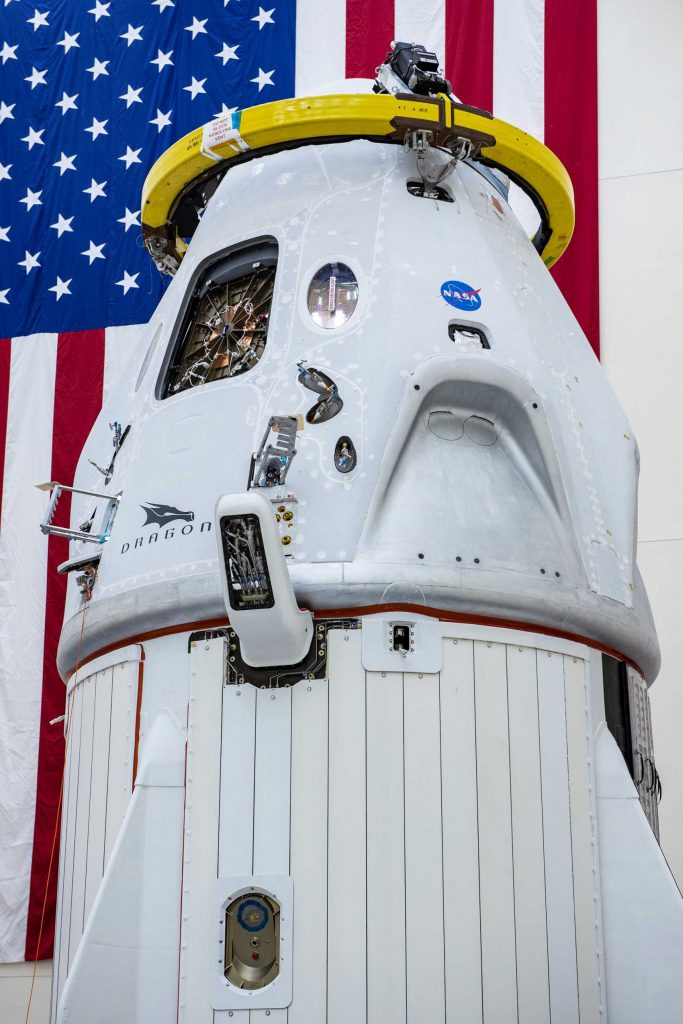
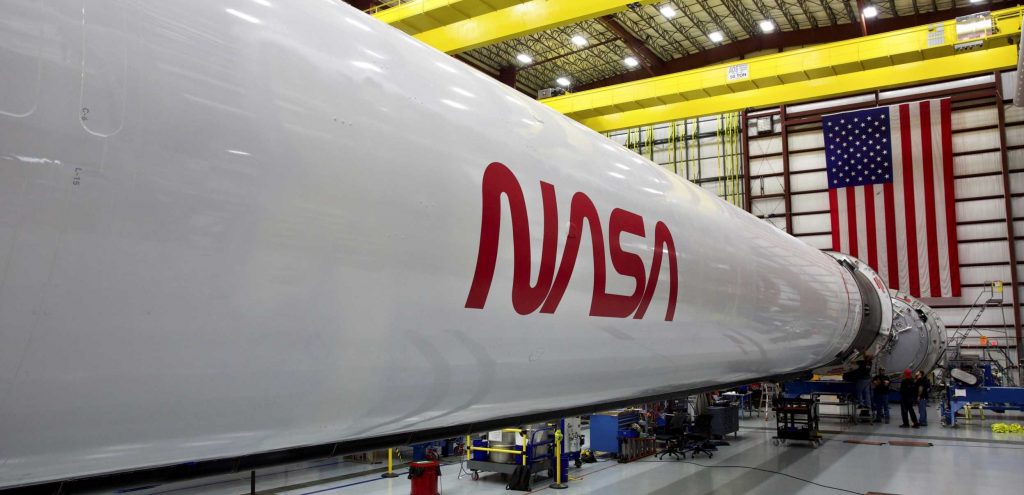
Meanwhile, a brand new Falcon 9 Block 5 booster – B1058 – and expendable upper stage are just shy of ready to go inside SpaceX’s main Launch Complex 39A (Pad 39A) hangar. Both were shipped from California to Florida only after both their Merlin engines and each integrated stage completed static fire acceptance tests in McGregor, Texas. As of April 1st, they appeared to be just shy of fully integrated, with B1058 missing only its titanium grid fins (and possibly landing legs).
Now T-12 days to launch, SpaceX could attach the spacecraft to that Falcon 9 rocket at any moment – if it hasn’t already. Before the rocket is fully ready for launch, SpaceX will need to perform a routine wet dress rehearsal (WDR) and static fire test at Pad 39A – partially unique for Crew Dragon because the spacecraft attached during them. Given that Demo-2 is far from a normal SpaceX launch, Crew Dragon and Falcon 9 could roll out for that critical preflight test at any moment.
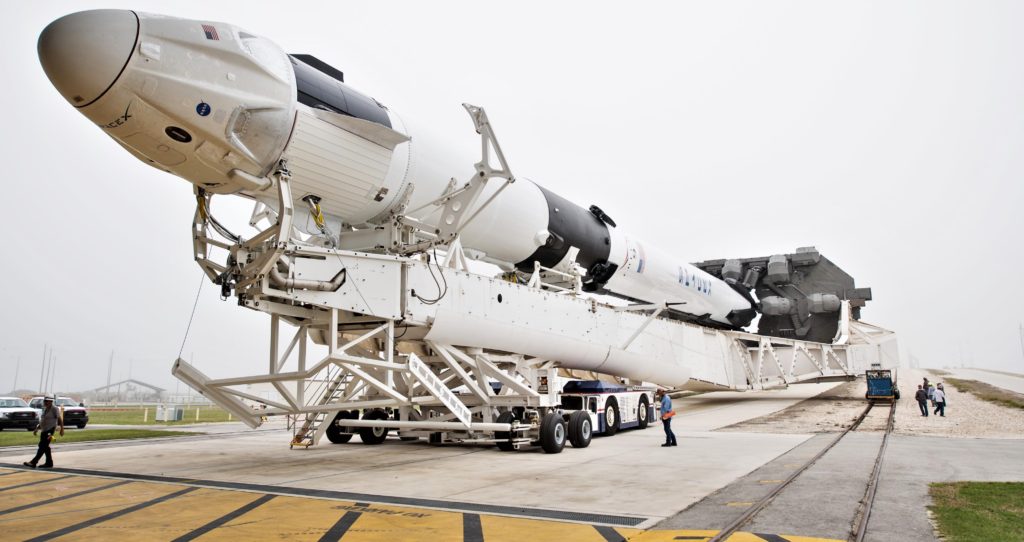
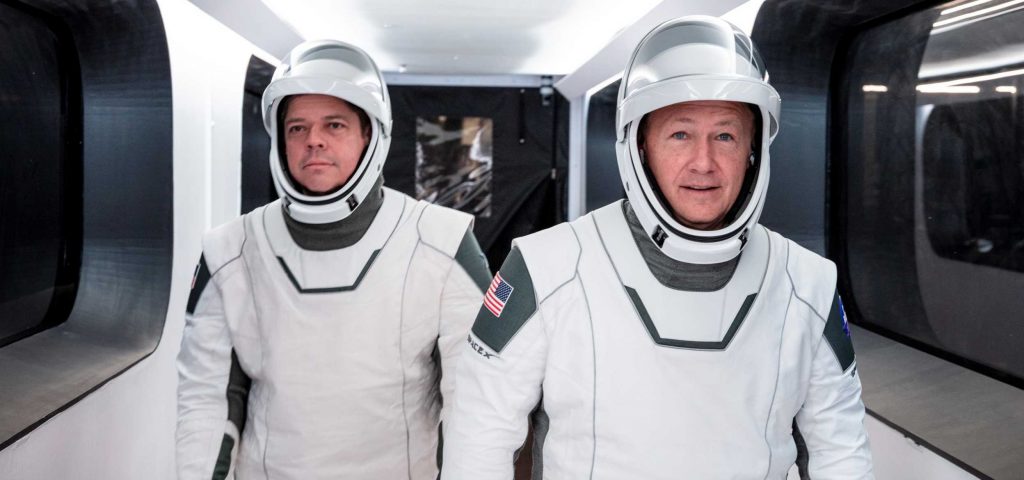
NASA has assigned astronauts Bob Behnken and Doug Hurley to fly Crew Dragon’s inaugural crewed mission to the International Space Station (ISS) and both astronauts have been training more or less 24/7 for the last 12-18 months, as well as advising SpaceX on Crew Dragon’s design. Now, according to SpaceX, those astronauts will be joined by a mosaic image comprised of thousands of photos uploaded by students around the world, ranging from kindergarten to graduate school and more.
Deemed “Class of 2020”, the project is meant to celebrate the class of 2020 – anyone and everyone set to graduate this year. Although unmentioned, the celebration comes at a time when the coronavirus pandemic will almost certainly preclude or dramatically curtail (for good reason) large public gatherings for the sake of public health, disrupting or fully canceling graduation ceremonies around the world. SpaceX says that photos submitted by students will be added to a mosaic of Earth and “will be printed and flown aboard SpaceX’s Crew Dragon spacecraft during its upcoming mission to the International Space Station with NASA astronauts Bob Behnken and Doug Hurley on board.”
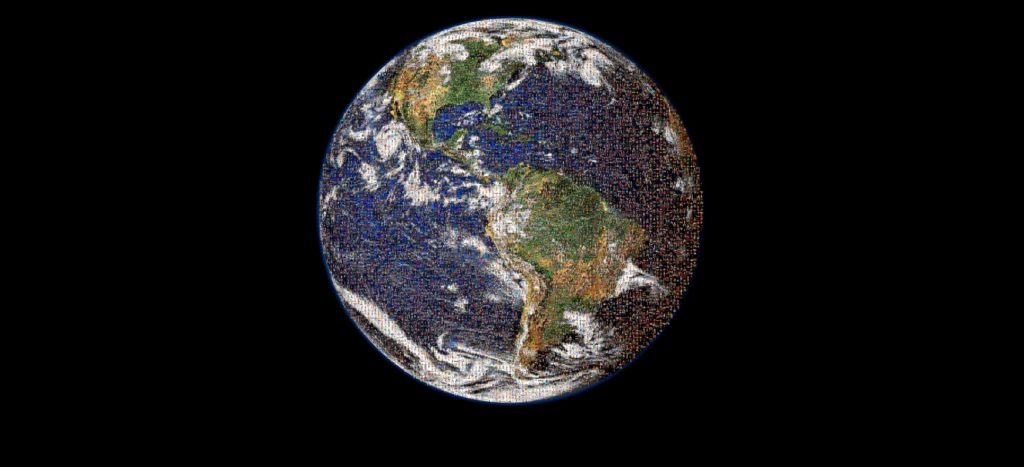
While it won’t replace the events themselves, having a photo physically sent to space certainly won’t hurt for tens of thousands, hundreds of thousands, or maybe even millions of students around the world. If you are a student or know one, you can submit your photo at SpaceX.com/ClassOf2020 before the end of May 20th.
Elon Musk
Why Tesla’s Q3 could be one of its biggest quarters in history
Tesla could stand to benefit from the removal of the $7,500 EV tax credit at the end of Q3.

Tesla has gotten off to a slow start in 2025, as the first half of the year has not been one to remember from a delivery perspective.
However, Q3 could end up being one of the best the company has had in history, with the United States potentially being a major contributor to what might reverse a slow start to the year.
Earlier today, the United States’ House of Representatives officially passed President Trump’s “Big Beautiful Bill,” after it made its way through the Senate earlier this week. The bill will head to President Trump, as he looks to sign it before his July 4 deadline.
The Bill will effectively bring closure to the $7,500 EV tax credit, which will end on September 30, 2025. This means, over the next three months in the United States, those who are looking to buy an EV will have their last chance to take advantage of the credit. EVs will then be, for most people, $7,500 more expensive, in essence.
The tax credit is available to any single filer who makes under $150,000 per year, $225,000 a year to a head of household, and $300,000 to couples filing jointly.
Ending the tax credit was expected with the Trump administration, as his policies have leaned significantly toward reliance on fossil fuels, ending what he calls an “EV mandate.” He has used this phrase several times in disagreements with Tesla CEO Elon Musk.
Nevertheless, those who have been on the fence about buying a Tesla, or any EV, for that matter, will have some decisions to make in the next three months. While all companies will stand to benefit from this time crunch, Tesla could be the true winner because of its sheer volume.
If things are done correctly, meaning if Tesla can also offer incentives like 0% APR, special pricing on leasing or financing, or other advantages (like free Red, White, and Blue for a short period of time in celebration of Independence Day), it could see some real volume in sales this quarter.
You can now buy a Tesla in Red, White, and Blue for free until July 14 https://t.co/iAwhaRFOH0
— TESLARATI (@Teslarati) July 3, 2025
Tesla is just a shade under 721,000 deliveries for the year, so it’s on pace for roughly 1.4 million for 2025. This would be a decrease from the 1.8 million cars it delivered in each of the last two years. Traditionally, the second half of the year has produced Tesla’s strongest quarters. Its top three quarters in terms of deliveries are Q4 2024 with 495,570 vehicles, Q4 2023 with 484,507 vehicles, and Q3 2024 with 462,890 vehicles.
Elon Musk
Tesla Full Self-Driving testing continues European expansion: here’s where
Tesla has launched Full Self-Driving testing in a fifth European country ahead of its launch.

Tesla Full Self-Driving is being tested in several countries across Europe as the company prepares to launch its driver assistance suite on the continent.
The company is still working through the regulatory hurdles with the European Union. They are plentiful and difficult to navigate, but Tesla is still making progress as its testing of FSD continues to expand.
Today, it officially began testing in a new country, as more regions open their doors to Tesla. Many owners and potential customers in Europe are awaiting its launch.
On Thursday, Tesla officially confirmed that Full Self-Driving testing is underway in Spain, as the company shared an extensive video of a trip through the streets of Madrid:
Como pez en el agua …
FSD Supervised testing in Madrid, Spain
Pending regulatory approval pic.twitter.com/txTgoWseuA
— Tesla Europe & Middle East (@teslaeurope) July 3, 2025
The launch of Full Self-Driving testing in Spain marks the fifth country in which Tesla has started assessing the suite’s performance in the European market.
Across the past several months, Tesla has been expanding the scope of countries where Full Self-Driving is being tested. It has already made it to Italy, France, the Netherlands, and Germany previously.
Tesla has already filed applications to have Full Self-Driving (Supervised) launched across the European Union, but CEO Elon Musk has indicated that this particular step has been the delay in the official launch of the suite thus far.
In mid-June, Musk revealed the frustrations Tesla has felt during its efforts to launch its Full Self-Driving (Supervised) suite in Europe, stating that the holdup can be attributed to authorities in various countries, as well as the EU as a whole:
Tesla Full Self-Driving’s European launch frustrations revealed by Elon Musk
“Waiting for Dutch authorities and then the EU to approve. Very frustrating and hurts the safety of people in Europe, as driving with advanced Autopilot on results in four times fewer injuries! Please ask your governing authorities to accelerate making Tesla safer in Europe.”
Waiting for Dutch authorities and then the EU to approve.
Very frustrating and hurts the safety of people in Europe, as driving with advanced Autopilot on results in four times fewer injuries!
Please ask your governing authorities to accelerate making Tesla safer in Europe. https://t.co/QIYCXhhaQp
— Elon Musk (@elonmusk) June 11, 2025
Tesla said last year that it planned to launch Full Self-Driving in Europe in 2025.
Elon Musk
xAI’s Memphis data center receives air permit despite community criticism
xAI welcomed the development in a post on its official xAI Memphis account on X.

Elon Musk’s artificial intelligence startup xAI has secured an air permit from Memphis health officials for its data center project, despite critics’ opposition and pending legal action. The Shelby County Health Department approved the permit this week, allowing xAI to operate 15 mobile gas turbines at its facility.
Air permit granted
The air permit comes after months of protests from Memphis residents and environmental justice advocates, who alleged that xAI violated the Clean Air Act by operating gas turbines without prior approval, as per a report from WIRED.
The Southern Environmental Law Center (SELC) and the NAACP has claimed that xAI installed dozens of gas turbines at its new data campus without acquiring the mandatory Prevention of Significant Deterioration (PSD) permit required for large-scale emission sources.
Local officials previously stated the turbines were considered “temporary” and thus not subject to stricter permitting. xAI applied for an air permit in January 2025, and in June, Memphis Mayor Paul Young acknowledged that the company was operating 21 turbines. SELC, however, has claimed that aerial footage shows the number may be as high as 35.
Critics are not giving up
Civil rights groups have stated that they intend to move forward with legal action. “xAI’s decision to install and operate dozens of polluting gas turbines without any permits or public oversight is a clear violation of the Clean Air Act,” said Patrick Anderson, senior attorney at SELC.
“Over the last year, these turbines have pumped out pollution that threatens the health of Memphis families. This notice paves the way for a lawsuit that can hold xAI accountable for its unlawful refusal to get permits for its gas turbines,” he added.
Sharon Wilson, a certified optical gas imaging thermographer, also described the emissions cloud in Memphis as notable. “I expected to see the typical power plant type of pollution that I see. What I saw was way worse than what I expected,” she said.
-

 Elon Musk3 days ago
Elon Musk3 days agoTesla investors will be shocked by Jim Cramer’s latest assessment
-

 News1 week ago
News1 week agoTesla Robotaxi’s biggest challenge seems to be this one thing
-

 News2 weeks ago
News2 weeks agoTexas lawmakers urge Tesla to delay Austin robotaxi launch to September
-

 Elon Musk2 weeks ago
Elon Musk2 weeks agoFirst Look at Tesla’s Robotaxi App: features, design, and more
-

 Elon Musk2 weeks ago
Elon Musk2 weeks agoxAI’s Grok 3 partners with Oracle Cloud for corporate AI innovation
-

 News2 weeks ago
News2 weeks agoSpaceX and Elon Musk share insights on Starship Ship 36’s RUD
-

 News2 weeks ago
News2 weeks agoWatch Tesla’s first driverless public Robotaxi rides in Texas
-

 News2 weeks ago
News2 weeks agoTesla has started rolling out initial round of Robotaxi invites

















